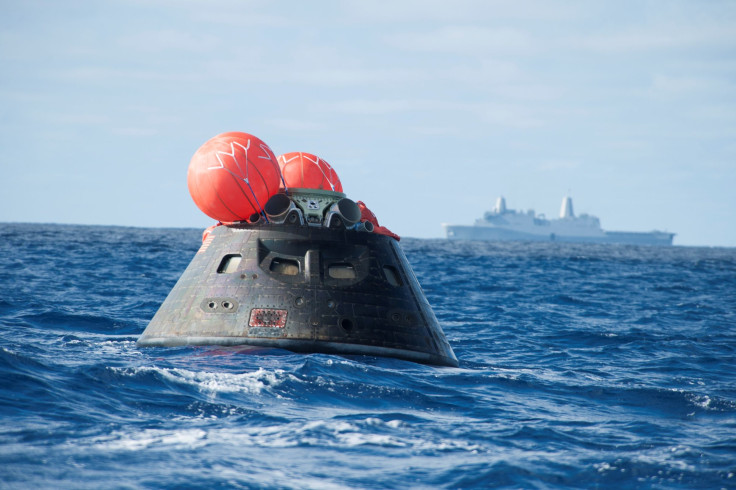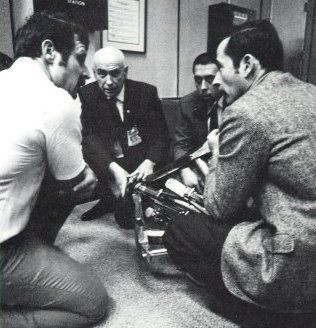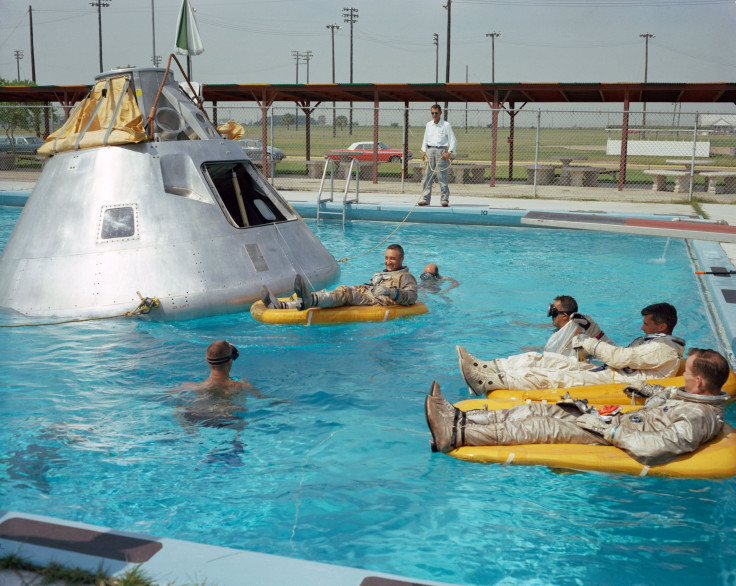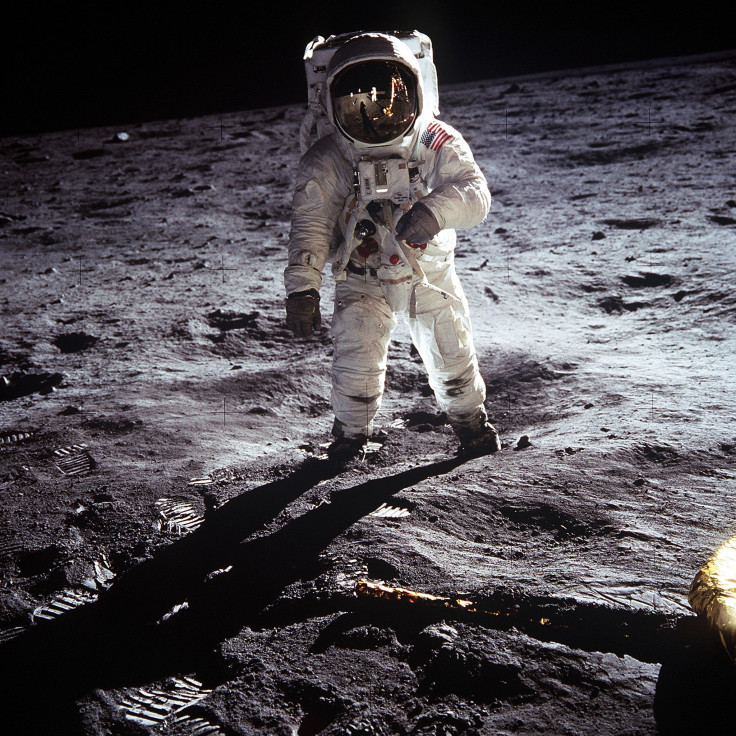Former NASA Flight Director Says A Return To The Moon Is Necessary Before Heading To Mars

NASA's plan to send humans to Mars in the 2030s is off to a great start. The Orion spacecraft test flight Friday went according to plan and the capsule survived reentry. While NASA awaits the capsule's return to the Kennedy Space Center, the space agency faces years of planning to make Mars a reality.
The Orion test flight was the first step in NASA's ambitious "Next Giant Leap" which ends with the first humans on Mars in the 2030s. Orion is crucial to getting astronauts to Mars and the spacecraft will also be used in an asteroid redirect mission in the 2020s. As part of that mission, NASA will use Orion to capture a near-Earth asteroid and place it in a safe orbit near the moon. A second flight will send astronauts to the captured asteroid to collect samples and return to Earth.
But what about plans for a return to the moon? ""First, you go to the moon before you go to Mars," George W.S. Abbey, a former director of NASA's Johnson Space Center said in an interview with the International Business Times.
Abbey, is currently the Baker Botts Senior Fellow in Space Policy at Rice University's Baker Institute for Public Policy. Abbey was named director of flight operations in 1976 and helped develop strategies for future moon and Mars missions. Speaking to International Business Times, Abbey said international cooperation is a key to future missions and a return to the moon is necessary before NASA can get to Mars.
"You're not going to go to Mars before going back to the moon. You need to establish a goal to go to the moon and do that first and have a program laid out for an effective way to do it, but they're not doing that right now and I think that's really key to exploration," Abbey said.

The Apollo program, Abbey said, was "based on the schedule dictated by President Kennedy that he wanted to go to the moon and safely return astronauts to the Earth before the end of the decade. So, we had a definite goal we were aiming for and everything we did was to make sure that we could meet that goal.
"Unfortunately, we had a tragedy on the launchpad that set us back," Abbey said, referring to the Apollo 1 cabin fire in 1967 that killed three astronauts. "That was very difficult, but probably we came out of that with a much better program. ... I think the Apollo fire probably helped ensure us really being able to get to the moon by the end of the decade and do it safely.
"We went through a major redesign of the Apollo spacecraft," Abbey said. "We redesigned a lot of components and a lot of systems and came up with nonflammable materials that we used inside the command module, tested and verified those, and flew safely in Apollo 7 in October 1968."

Abbey said NASA had already committed to Apollo 8 before Apollo 7 was even completed. Apollo 8, which launched in December 1968, was the first manned mission to leave Earth's orbit and circle the moon. The spacecraft launched on a Saturn V rocket. “That was the first flight of humans on the Saturn V," Abbey said. "The flight before that we had two engines fail on the second stage, and the third-stage engine wouldn’t restart, which was critical to being able to inject us on a course for the moon. The spacecraft LM adapter, which was on that vehicle and surrounded the lunar module, came apart.”
Apollo 8 launched on Dec. 21 and orbited the moon on Christmas Eve. The spacecraft provided mankind's first view of Earth in its entirety, the "big blue marble," as it would later be dubbed. "That was a very moving occasion when we did that, when the astronauts were reading the Bible,” Abbey said.
Apollo 9, another test of the lunar module, was launched two months after Apollo 8, on March 3, 1969. Then, in May, the Apollo 10 mission went to the moon to scout a landing site for Apollo 11, Abbey explained. "Two astronauts descended in the lunar module to a low altitude over the site and docked with the command module," Abbey said. "Two months later, in July, we landed on the moon.”

With the goal completed, the Apollo program finally had some breathing room. Five months after Apollo 11's historic mission, Apollo 12 focused on honing flight capabilities as it headed to the moon. Abbey was a member of the operations team during the next flight, Apollo 13, which was intended to land on the moon. But as the spacecraft neared the moon, an oxygen tank exploded, forcing the three astronauts to act fast to create a carbon dioxide removal system that would allow them to return safely to Earth on April 17, 1970.
"On Apollo 15, 16 and 17, we took a lunar rover to the moon and really maximized the scientific return on the last three missions," Abbey said. "It was a time of great challenge and there was a lot of activity going on all the time. When we flew Apollo 17 in December 1972 , the crew was already training for the first flight of [the space station] Skylab, which took place in May 1973."
After the Apollo missions, NASA began the first phase of international cooperation and worked with the Soviets on several docking missions while developing the space shuttle."It was an exciting time and there was always a vision for the future as to where we were going and what we were going to do," Abbey said.
As for parallels between Apollo and Orion, Abbey has some concerns about NASA's next-generation spacecraft. "Orion is a program that doesn't really have a destination. It's a vehicle that is being built, but NASA doesn't have a destination for it. They say they are going to Mars, but you're not going to Mars until you solve some really major issues. Radiation is certainly an issue that needs to be resolved before you send crew safely to Mars, and I think you need to come up with some new propulsion systems to go to Mars," Abbey said. "Orion is quite different from Apollo and quite a different program. The next flight for Orion won't be for another five years."
A future phase of NASA's Orion program is a proposed asteroid mission in the 2020s. But Abbey believes NASA should focus on international cooperation, working with India and China as well as Russia, and a return to the moon. "I don't think it's got a lot of support in Congress and I don't think it's really supported in NASA," he said. "They say they're going to do an asteroid mission, but I'm not sure if they know how to do it and I'm not sure if it will ever happen." NASA, he said, should "take advantage of the fact we've been able to assemble structures in Earth's orbit ... where you can then fly missions to the moon."

International cooperation would reduce costs for future missions and would utilize the capabilities of other countries, Abbey said. Companies such as Boeing and SpaceX could serve as contributors and partners instead of the missions just being funded by the government. Companies could help provide resources and form partnerships with NASA much like the other countries involved in the program, he said.
Abbey said NASA should continue its "very successful robotic exploration program" on Mars and work with other countries, including India, in these efforts. "The United States needs to take a leadership role," he said. "When we stopped flying the shuttle we kind of gave up our role as leader and somehow we need to regain that."
© Copyright IBTimes 2024. All rights reserved.






















